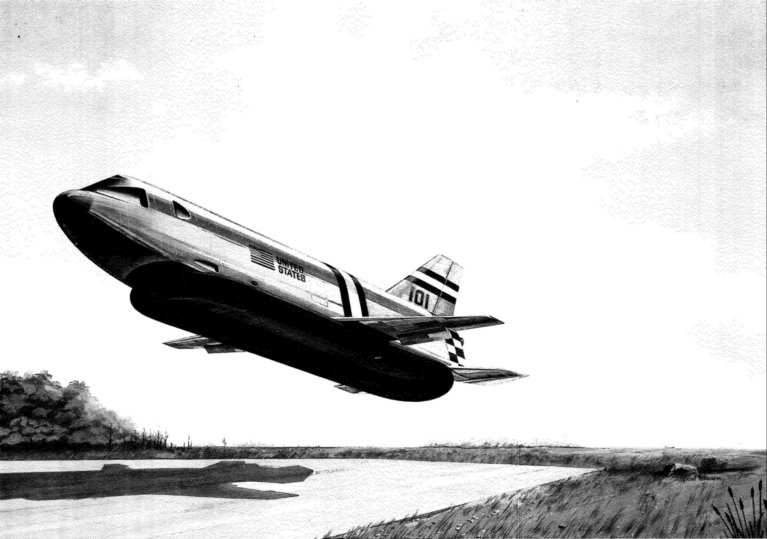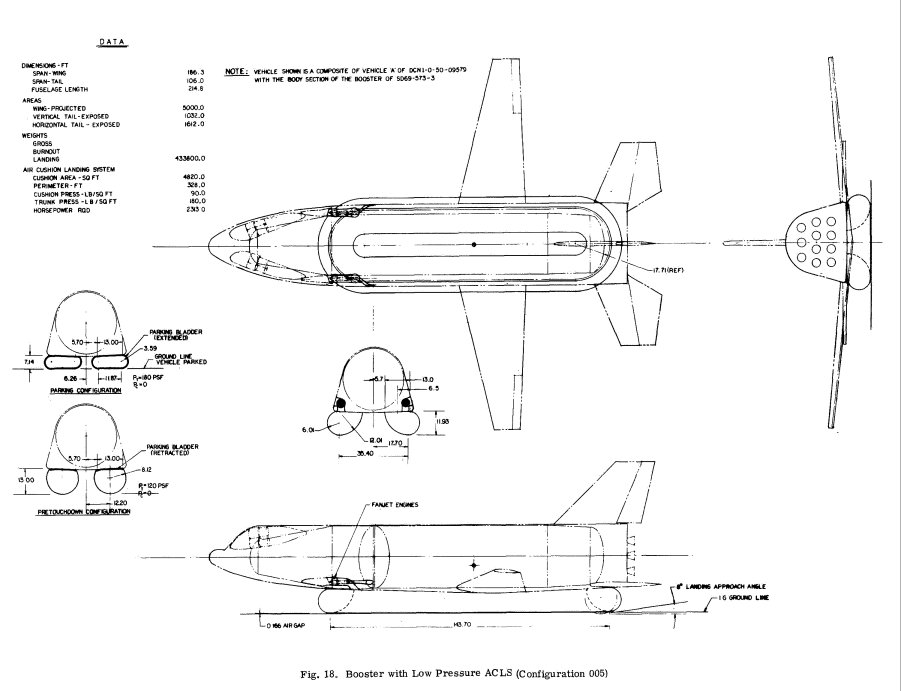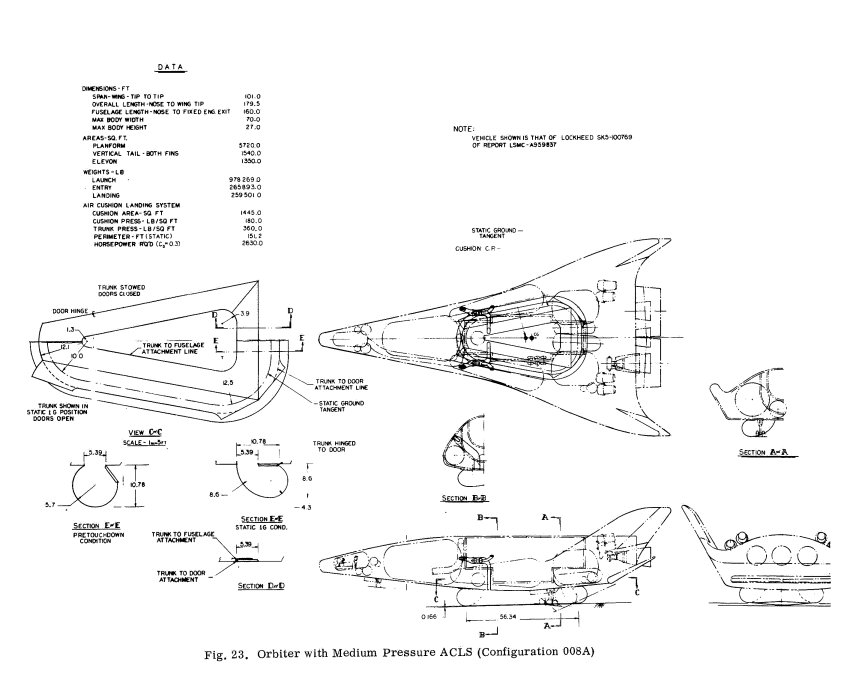In 1970, Bell Aerospace Company delivered a report to NASA on using air cushing landing systems (ACLS) on the Space Shuttle system. These were the important parts of hovercraft – the skirts, the blowers, etc – packaged to fit in the underside of the Shuttle Orbiter and Booster. At the time the Shuttle Booster was expected to be a manned flyback vehicle, returning to a runway landing. The
The ACLS was expected to offer several advantages over conventional gear:
1)Lower weight
2) Distributed, rather than point, loads
3) Rough field and water landing capability
4) No need to de-crab after landing in crosswinds
5) Easier ground mobility
6) Higher possible landing speeds
Several obvious disadvantages came with the ACLS, including the need for relatively large and/or numerous “landing gear doors” and the relatively complex, voluminous and fuel-hungry systems.
Bell did not design their own space shuttles, but instead used an existing lifting-body (Lockheed) shuttle orbiter and straight-winged (NASA/McDonnell-Douglas) booster.
3 Responses to “Hovercraft Space Shuttles”
Sorry, the comment form is closed at this time.



Wow. You gotta love America.
Awesome!!
It makes me wonder how they expect to inflate the cushions on large aircraft landing systems (it takes a lot of air volume).
It also makes me wonder what they’ll think of next!!
If you look closely at the booster drawing, you’ll see two small fanjet engines. The entire exhaust of the fanjets was to be dumped into the skirt.